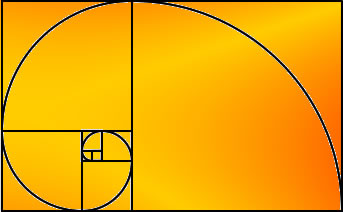Classic news narratives tend to follow a single primary character through a story. There are other characters, of course, including people connected to the main character or more official or expert sources to provide context and perspective.
Such classic narratives are rare in journalism — as they should be. To make one work, the central character or subject has to represent a much larger social issue or situation. They have to be truly central to a story and, ideally, relatable in some way. They have to carry the weight of the full issue, without gaps or hidden agendas that make a story incomplete or easy to dismiss as biased.
With fast-turn stories or those that contain layers of complexities, it can be near impossible to find such a person. So what’s a reporter to do?
Consider a triad or triptych lede: Find three people who, taken together, tell a fuller story while also reinforcing that the bigger social issue plays out in intimate ways, person-by-person. Introducing those three representative people in brief paragraph profiles or scenes at the start of the story can draw readers in with example, action and emotion while also signaling that the story is about a shared experience.
The representative power of three
That’s what The New York Times did in a recent story from Gaza. “Gaza’s Shadow Death Toll: Bodies Buried Beneath the Rubble,” published March 23, 2024, was about the myriad and desperate ways family, friends and rescuers search for victims of what has become a killing field in Middle East. Here are the first three grafs:
A curly-haired young man shakes as he bends over the mound of smashed concrete that used to be his friend’s home. He clutches his rain-spotted iPhone in his trembling hands, but there is no answer. “Please God, Ahmed,” he sobs in a video posted on social media. “Please God.”
A father crawls over a mountain of gray concrete shards, his right ear pressed to the dust. “I can’t hear you, love,” he tells his absent children in a different video shared on Instagram and verified by The New York Times. He scrabbles over a few yards to try again. “Salma! Said!” he yells, hitting his dusty hammer against the mute concrete over and over, before breaking down. “Said,” he cries, “didn’t I tell you to take care of your sister?”
Another man on another rubble heap is looking for his wife and his children, Rahaf, 6, and Aboud, 4. “Rahaf,” he cries, leaning forward to scan the twisted pile of gray before him. “What has she done to deserve this?”
The story then pulls out to a tight, focused nut graf:
Gaza has become a 140-square-mile graveyard, each destroyed building another jagged tomb for those still buried within.
And that is followed by three grafs of summary context:
The most recent health ministry estimate for the number of people missing in Gaza is about 7,000. But that figure has not been updated since November. Gaza and aid officials say thousands more have most likely been added to that toll in the weeks and months since then.
Some were buried too hastily to be counted. Others lie decomposing in the open, in places too dangerous to be reached, or have simply disappeared amid the fighting, the chaos and ongoing Israeli detentions.
The rest, in all likelihood, remain trapped under the rubble.
The result is to pull readers in to the heart of this piece — all range of people clawing through heaps of concrete and steel and glass because the death toll in Gaza has outstripped the reach of trained rescue/recovery crews. That allows the reporting team — Vivian Yee, Iyad Abuheweila, Abu Bakr Bashir, Ameera Harouda and Nada Rashwa — to bring the emotion to a story that is largely about numbers. It might have been effective to follow the efforts of one person — let’s say one father searching for his family — but that wouldn’t have signaled the scope of the situation.
It also allows for fast work. The triad scenes mostly likely came from Yee, who is based in Cairo to cover North Africa and the Middle East; her byline sits atop many of the on-the-ground stories from Gaza. But colleagues from Istanbul, London, Qatar and Cairo can provide essential reporting that leaves the field reporter free to find characters, scene and description.
The technique doesn’t require a team. An individual reporter who has a notebook filled with examples that, taken together, demonstrate the facets of a situation can use the technique with equal effect.
Making it work
Key to this approach is to zero in as tightly as possible on those opening scene/character grafs. Only information relevant to the bigger issue is included. In some stories, the representative individuals are returned later in the story, one by one, to more fully explore their part of an issue. In others, as The New York Times’ Gaza piece, the three first scenes aren’t returned to specifically, but the emotion of those moments echo throughout the rest of the story.

Final point: Why three? That’s far more a guideline than any rule. But two people can be seen as more of a comparison or contrast. Four or more can feel too long. Three can signal a larger whole. Roy Peter Clark, in his must-have book “Writing Tools,” ascribes a magical quality to combinations of three in Tool #3: “Choose the number of elements with a purpose in mind.” He cites many examples of threesomes, from Moe, Larry and Curly of the Three Stooges to the Beginning, Middle and End of a classic story structure. And the theory of three can easily be found in other parts of life, including design, photo composition and nature. Remember the Golden mean? Watch a whorls of a rose blossom or the emergence of a fern.
Don’t get hung up on numbers. Just consider the value of a character-drive lede that doesn’t rely on a singular character to hold an entire, complex piece, but also doesn’t reduce the humans in our stories to the superficiality of quotes and names.



